#SQL services optimization
Explore tagged Tumblr posts
Text
Optimizing SQL Server with the Delayed Start
In today’s fast-paced IT environment, optimizing SQL Server performance and startup times is crucial for maintaining system efficiency and ensuring that resources are available when needed. One valuable, yet often overlooked, feature is the SQL Server services delayed start option. This configuration can significantly enhance your server’s operational flexibility, particularly in environments…

View On WordPress
#SQL Server configuration#SQL Server delayed start#SQL services optimization#SQL startup options#T-SQL examples
0 notes
Text
What is Lead Generation? A Complete Guide for Beginners in 2025
In the ever-evolving world of digital marketing and sales, lead generation remains a foundational strategy for business growth. Whether you’re running a small startup or a large enterprise, understanding what lead generation is—and how to do it effectively—can make or break your customer acquisition efforts.
In this post, we’ll break down what lead generation means, how it works, why it’s important in 2025, and how you can start implementing a successful lead generation strategy today.
What is Lead Generation?
Lead generation is the process of attracting and converting strangers into someone who has indicated interest in your product or service. These individuals are called "leads" and are typically the first step in the sales funnel.
A lead can be anyone who has shared their contact information with your business—whether by filling out a form, subscribing to a newsletter, downloading an eBook, or booking a demo.
The goal of lead generation is simple: build a pipeline of potential customers and nurture them into becoming paying clients.

Why Lead Generation is Crucial in 2025
With buyers becoming more informed and self-directed, the way businesses generate leads has shifted significantly. According to Demand Gen Report (source), 71% of B2B buyers start their journey with a generic search. This makes it more important than ever for businesses to have a strong online presence and provide value from the very first interaction.
Here’s why lead generation is essential in today’s landscape:
It drives business growth: Without leads, you have no sales. And without sales, you have no business.
It builds relationships: Lead generation introduces people to your brand in a helpful, non-intrusive way.
It improves ROI: Targeted lead gen strategies ensure you’re attracting the right audience, not wasting resources.
It supports long-term success: A consistent lead pipeline means predictable revenue and scalable growth.
Types of Leads
Not all leads are the same. Understanding the different types can help you tailor your messaging and approach.
1. Marketing Qualified Lead (MQL)
Someone who has shown interest through content interaction but isn’t ready to buy yet.
2. Sales Qualified Lead (SQL)
A lead who has taken action suggesting they’re ready to talk to your sales team (like booking a call).
3. Product Qualified Lead (PQL)
Typically relevant for SaaS—someone who has used your product (like a free trial) and shows buying intent.
How Lead Generation Works
The lead generation process usually includes these key steps:
1. Attract Visitors
Use SEO, social media, content marketing, and paid ads to bring people to your website or landing pages.
2. Offer Value
Create lead magnets like guides, webinars, checklists, or free tools that your target audience wants.
3. Capture Information
Use forms, chatbots, or popups to collect user details in exchange for your lead magnet.
4. Nurture and Convert
Send follow-up emails, offer more content, or schedule calls to move leads further down the funnel.
Watch: What is Lead Generation?
📹 This beginner-friendly YouTube video explains it well: "7 Keys to Lead Generation & Sales Prospecting for Business Development and B2B Sales"
youtube
Popular Lead Generation Strategies in 2025
✍️ Content Marketing
Publishing helpful blog posts, whitepapers, or videos to attract and educate potential customers.
🔍 Search Engine Optimization (SEO)
Optimizing your site and content to rank high on Google so your target audience can find you.
📧 Email Marketing
Sending personalized, value-packed messages to nurture leads and keep them engaged.
💼 LinkedIn Outreach
Great for B2B businesses—use it to connect with decision-makers and share valuable resources.
📣 Paid Advertising
Run targeted ads on Google, Facebook, or LinkedIn to bring traffic directly to high-converting landing pages.
Tools to Help with Lead Generation
Here are some must-have tools to streamline your lead generation efforts:
HubSpot – CRM and marketing automation for capturing and nurturing leads.
Mailchimp – For sending and automating email campaigns.
OptinMonster – Great for creating popups and opt-in forms.
SEMrush – For keyword research and SEO optimization.
LinkedIn Sales Navigator – Ideal for identifying and connecting with B2B leads.
How Businesses Use Lead Generation Services
Many companies choose to outsource their efforts to experts who specialize in attracting and converting high-quality leads. These lead generation services offer tailored strategies that align with your industry, audience, and growth goals—saving time while maximizing ROI.
Final Thoughts
Lead generation is the lifeblood of any successful business. Whether you’re a marketer trying to fill your sales funnel or an entrepreneur looking to grow your client base, understanding how to attract and convert leads is essential.
By combining valuable content, smart targeting, and nurturing tools, you can build a lead gen system that works for you 24/7. In 2025, the businesses that thrive will be the ones that focus not just on selling—but on providing value from the very first click.
2 notes
·
View notes
Text
My Experience with Database Homework Help from DatabaseHomeworkHelp.com
As a student majoring in computer science, managing the workload can be daunting. One of the most challenging aspects of my coursework has been database management. Understanding the intricacies of SQL, ER diagrams, normalization, and other database concepts often left me overwhelmed. That was until I discovered Database Homework Help from DatabaseHomeworkHelp.com. This service has been a lifesaver, providing me with the support and guidance I needed to excel in my studies.
The Initial Struggle
When I first started my database course, I underestimated the complexity of the subject. I thought it would be as straightforward as other programming courses I had taken. However, as the semester progressed, I found myself struggling with assignments and projects. My grades were slipping, and my confidence was waning. I knew I needed help, but I wasn't sure where to turn.
I tried getting assistance from my professors during office hours, but with so many students needing help, the time available was limited. Study groups with classmates were somewhat helpful, but they often turned into social gatherings rather than focused study sessions. I needed a more reliable and structured form of support.
Discovering DatabaseHomeworkHelp.com
One evening, while frantically searching for online resources to understand an especially tricky ER diagram assignment, I stumbled upon DatabaseHomeworkHelp.com. The website promised expert help on a wide range of database topics, from basic queries to advanced database design and implementation. Skeptical but hopeful, I decided to give it a try. It turned out to be one of the best decisions I’ve made in my academic career.
First Impressions
The first thing that struck me about DatabaseHomeworkHelp.com was the user-friendly interface. The website was easy to navigate, and I quickly found the section where I could submit my assignment. The process was straightforward: I filled out a form detailing my assignment requirements, attached the relevant files, and specified the deadline.
Within a few hours, I received a response from one of their database experts. The communication was professional and reassuring. They asked a few clarifying questions to ensure they fully understood my needs, which gave me confidence that I was in good hands.
The Quality of Help
What impressed me the most was the quality of the assistance I received. The expert assigned to my task not only completed the assignment perfectly but also provided a detailed explanation of the solutions. This was incredibly helpful because it allowed me to understand the concepts rather than just submitting the work.
For example, in one of my assignments, I had to design a complex database schema. The expert not only provided a well-structured schema but also explained the reasoning behind each table and relationship. This level of detail helped me grasp the fundamental principles of database design, something I had been struggling with for weeks.
Learning and Improvement
With each assignment I submitted, I noticed a significant improvement in my understanding of database concepts. The experts at DatabaseHomeworkHelp.com were not just solving problems for me; they were teaching me how to solve them myself. They broke down complex topics into manageable parts and provided clear, concise explanations.
I particularly appreciated their help with SQL queries. Writing efficient and effective SQL queries was one of the areas I found most challenging. The expert guidance I received helped me understand how to approach query writing logically. They showed me how to optimize queries for better performance and how to avoid common pitfalls.
Timely Delivery
Another aspect that stood out was their commitment to deadlines. As a student, timely submission of assignments is crucial. DatabaseHomeworkHelp.com always delivered my assignments well before the deadline, giving me ample time to review the work and ask any follow-up questions. This reliability was a significant relief, especially during times when I had multiple assignments due simultaneously.
Customer Support
The customer support team at DatabaseHomeworkHelp.com deserves a special mention. They were available 24/7, and I never had to wait long for a response. Whether I had a question about the pricing, needed to clarify the assignment details, or required an update on the progress, the support team was always there to assist me promptly and courteously.
Affordable and Worth Every Penny
As a student, budget is always a concern. I was worried that professional homework help would be prohibitively expensive. However, I found the pricing at DatabaseHomeworkHelp.com to be reasonable and affordable. They offer different pricing plans based on the complexity and urgency of the assignment, making it accessible for students with varying budgets.
Moreover, considering the quality of help I received and the improvement in my grades, I can confidently say that their service is worth every penny. The value I got from their expert assistance far outweighed the cost.
A Lasting Impact
Thanks to DatabaseHomeworkHelp.com, my grades in the database course improved significantly. But beyond the grades, the most valuable takeaway has been the knowledge and confidence I gained. I now approach database assignments with a clearer understanding and a more structured method. This confidence has also positively impacted other areas of my studies, as I am less stressed and more organized.
Final Thoughts
If you're a student struggling with database management assignments, I highly recommend Database Homework Help from DatabaseHomeworkHelp.com. Their expert guidance, timely delivery, and excellent customer support can make a significant difference in your academic journey. They don’t just provide answers; they help you understand the material, which is crucial for long-term success.
In conclusion, my experience with DatabaseHomeworkHelp.com has been overwhelmingly positive. The support I received has not only helped me improve my grades but also enhanced my overall understanding of database concepts. I am grateful for their assistance and will undoubtedly continue to use their services as I progress through my computer science degree.

7 notes
·
View notes
Text
Maximizing Business Insights with Power BI: A Comprehensive Guide for Small Businesses
Maximizing Business Insights Small businesses often face the challenge of making data-driven decisions without the resources of larger enterprises. Power BI, Microsoft's powerful analytics tool, can transform how small businesses use data, turning raw numbers into actionable insights. Here's a comprehensive guide to maximizing business insights with Power BI.
Introduction to Power BI
Power BI is a business analytics service by Microsoft that provides interactive visualizations and business intelligence capabilities. With an interface simple enough for end users to create their own reports and dashboards, it connects to a wide range of data sources.
Benefits for Small Businesses
1. User-Friendly Interface: Power BI's drag-and-drop functionality makes it accessible for users without technical expertise.
2. Cost-Effective: Power BI offers a free version with substantial features and a scalable pricing model for additional needs.
3. Real-Time Data: Businesses can monitor their operations with real-time data, enabling quicker and more informed decision-making.
Setting Up Power BI
1. Data Sources: Power BI can connect to various data sources such as Excel, SQL databases, and cloud services like Azure.
2. Data Modeling: Use Power BI to clean and transform data, creating a cohesive data model that forms the foundation of your reports.
3. Visualizations: Choose from a wide array of visualizations to represent your data. Customize these visuals to highlight the most critical insights.
Customizing Dashboards
1. Tailor to Needs: Customize dashboards to reflect the unique needs of your business, focusing on key performance indicators (KPIs) relevant to your goals.
2. Interactive Reports:Create interactive reports that allow users to explore data more deeply, providing a clearer understanding of underlying trends.
Real-World Examples
Several small businesses have successfully implemented Power BI to gain a competitive edge:
1. Retail: A small retail store used Power BI to track sales trends, optimize inventory, and identify peak shopping times.
2. Finance:A small financial advisory firm employed Power BI to analyze client portfolios, improving investment strategies and client satisfaction.
Integration with Existing Tools
Power BI seamlessly integrates with other Microsoft products such as Excel and Azure, as well as third-party applications, ensuring a smooth workflow and enhanced productivity.
Best Practices
1. Data Accuracy: Ensure data accuracy by regularly updating your data sources.
2. Training: Invest in training your team to use Power BI effectively.
3. Security: Implement robust security measures to protect sensitive data.
Future Trends
Power BI continues to evolve, with future updates likely to include more advanced AI features and enhanced data processing capabilities, keeping businesses at the forefront of technology.
Conclusion
Power BI offers small businesses a powerful tool to transform their data into meaningful insights. By adopting Power BI, businesses can improve decision-making, enhance operational efficiency, and gain a competitive advantage. Partnering with Vbeyond Digital ensures a smooth and successful implementation, maximizing the benefits of Power BI for your business. with Power BI: A Comprehensive Guide for Small Businesses
3 notes
·
View notes
Text
The Vital Role of Windows VPS Hosting Services in Today’s Digital World
In the fast-paced, ever-evolving digital landscape, businesses and individuals alike are in constant pursuit of reliability, speed, and efficiency. One technological marvel that has been increasingly pivotal in achieving these goals is Windows VPS (Virtual Private Server) hosting services. These services offer a robust and versatile solution that caters to a wide range of needs, from small business operations to large-scale enterprises. But what makes Windows VPS hosting services so indispensable? Let's dive in.
1. Unmatched Performance and Reliability
When it comes to performance, Windows VPS hosting stands out. Unlike shared hosting, where resources are distributed among multiple users, VPS hosting allocates dedicated resources to each user. This means faster load times, reduced downtime, and a smoother user experience. For businesses, this translates to enhanced customer satisfaction and improved SEO rankings.
2. Scalability at Its Best
One of the standout features of Windows VPS hosting is its scalability. Whether you're a startup experiencing rapid growth or an established business expanding its digital footprint, VPS hosting allows you to easily upgrade your resources as needed. This flexibility ensures that your hosting service grows with your business, eliminating the need for frequent and costly migrations.
3. Enhanced Security Measures
In an age where cyber threats are a constant concern, security is paramount. Windows VPS hosting provides a higher level of security compared to shared hosting. With isolated environments for each user, the risk of security breaches is significantly minimized. Additionally, many Windows VPS services come with advanced security features such as firewalls, regular backups, and DDoS protection, ensuring your data remains safe and secure.
4. Full Administrative Control
For those who require more control over their hosting environment, Windows VPS hosting offers full administrative access. This means you can customize your server settings, install preferred software, and manage your resources as you see fit. This level of control is particularly beneficial for developers and IT professionals who need a tailored hosting environment to meet specific project requirements.
5. Cost-Effective Solution
Despite its numerous advantages, Windows VPS hosting remains a cost-effective solution. It offers a middle ground between the affordability of shared hosting and the high performance of dedicated hosting. By only paying for the resources you need, you can optimize your budget without compromising on quality or performance.
6. Seamless Integration with Microsoft Products
For businesses heavily invested in the Microsoft ecosystem, Windows VPS hosting provides seamless integration with Microsoft products. Whether it's running applications like SQL Server, SharePoint, or other enterprise solutions, the compatibility and performance of Windows VPS hosting are unparalleled.
In conclusion, Windows VPS hosting services are a critical asset in the modern digital world. They offer unmatched performance, scalability, security, control, and cost-effectiveness, making them an ideal choice for businesses and individuals striving for success online. As the digital landscape continues to evolve, embracing Windows VPS hosting can provide the stability and reliability needed to stay ahead of the curve.
3 notes
·
View notes
Text
Top 5 Selling Odoo Modules.
In the dynamic world of business, having the right tools can make all the difference. For Odoo users, certain modules stand out for their ability to enhance data management and operations. To optimize your Odoo implementation and leverage its full potential.
That's where Odoo ERP can be a life savior for your business. This comprehensive solution integrates various functions into one centralized platform, tailor-made for the digital economy.
Let’s drive into 5 top selling module that can revolutionize your Odoo experience:
Dashboard Ninja with AI, Odoo Power BI connector, Looker studio connector, Google sheets connector, and Odoo data model.
1. Dashboard Ninja with AI:
Using this module, Create amazing reports with the powerful and smart Odoo Dashboard ninja app for Odoo. See your business from a 360-degree angle with an interactive, and beautiful dashboard.
Some Key Features:
Real-time streaming Dashboard
Advanced data filter
Create charts from Excel and CSV file
Fluid and flexible layout
Download Dashboards items
This module gives you AI suggestions for improving your operational efficiencies.
2. Odoo Power BI Connector:
This module provides a direct connection between Odoo and Power BI Desktop, a Powerful data visualization tool.
Some Key features:
Secure token-based connection.
Proper schema and data type handling.
Fetch custom tables from Odoo.
Real-time data updates.
With Power BI, you can make informed decisions based on real-time data analysis and visualization.
3. Odoo Data Model:
The Odoo Data Model is the backbone of the entire system. It defines how your data is stored, structured, and related within the application.
Key Features:
Relations & fields: Developers can easily find relations ( one-to-many, many-to-many and many-to-one) and defining fields (columns) between data tables.
Object Relational mapping: Odoo ORM allows developers to define models (classes) that map to database tables.
The module allows you to use SQL query extensions and download data in Excel Sheets.
4. Google Sheet Connector:
This connector bridges the gap between Odoo and Google Sheets.
Some Key features:
Real-time data synchronization and transfer between Odoo and Spreadsheet.
One-time setup, No need to wrestle with API’s.
Transfer multiple tables swiftly.
Helped your team’s workflow by making Odoo data accessible in a sheet format.
5. Odoo Looker Studio Connector:
Looker studio connector by Techfinna easily integrates Odoo data with Looker, a powerful data analytics and visualization platform.
Some Key Features:
Directly integrate Odoo data to Looker Studio with just a few clicks.
The connector automatically retrieves and maps Odoo table schemas in their native data types.
Manual and scheduled data refresh.
Execute custom SQL queries for selective data fetching.
The Module helped you build detailed reports, and provide deeper business intelligence.
These Modules will improve analytics, customization, and reporting. Module setup can significantly enhance your operational efficiency. Let’s embrace these modules and take your Odoo experience to the next level.
Need Help?
I hope you find the blog helpful. Please share your feedback and suggestions.
For flawless Odoo Connectors, implementation, and services contact us at
[email protected] Or www.techneith.com
#odoo#powerbi#connector#looker#studio#google#microsoft#techfinna#ksolves#odooerp#developer#web developers#integration#odooimplementation#crm#odoointegration#odooconnector
4 notes
·
View notes
Text
Optimizing Business Operations with Advanced Machine Learning Services
Machine learning has gained popularity in recent years thanks to the adoption of the technology. On the other hand, traditional machine learning necessitates managing data pipelines, robust server maintenance, and the creation of a model for machine learning from scratch, among other technical infrastructure management tasks. Many of these processes are automated by machine learning service which enables businesses to use a platform much more quickly.
What do you understand of Machine learning?
Deep learning and neural networks applied to data are examples of machine learning, a branch of artificial intelligence focused on data-driven learning. It begins with a dataset and gains the ability to extract relevant data from it.
Machine learning technologies facilitate computer vision, speech recognition, face identification, predictive analytics, and more. They also make regression more accurate.
For what purpose is it used?
Many use cases, such as churn avoidance and support ticket categorization make use of MLaaS. The vital thing about MLaaS is it makes it possible to delegate machine learning's laborious tasks. This implies that you won't need to install software, configure servers, maintain infrastructure, and other related tasks. All you have to do is choose the column to be predicted, connect the pertinent training data, and let the software do its magic.
Natural Language Interpretation
By examining social media postings and the tone of consumer reviews, natural language processing aids businesses in better understanding their clientele. the ml services enable them to make more informed choices about selling their goods and services, including providing automated help or highlighting superior substitutes. Machine learning can categorize incoming customer inquiries into distinct groups, enabling businesses to allocate their resources and time.
Predicting
Another use of machine learning is forecasting, which allows businesses to project future occurrences based on existing data. For example, businesses that need to estimate the costs of their goods, services, or clients might utilize MLaaS for cost modelling.
Data Investigation
Investigating variables, examining correlations between variables, and displaying associations are all part of data exploration. Businesses may generate informed suggestions and contextualize vital data using machine learning.
Data Inconsistency
Another crucial component of machine learning is anomaly detection, which finds anomalous occurrences like fraud. This technology is especially helpful for businesses that lack the means or know-how to create their own systems for identifying anomalies.
Examining And Comprehending Datasets
Machine learning provides an alternative to manual dataset searching and comprehension by converting text searches into SQL queries using algorithms trained on millions of samples. Regression analysis use to determine the correlations between variables, such as those affecting sales and customer satisfaction from various product attributes or advertising channels.
Recognition Of Images
One area of machine learning that is very useful for mobile apps, security, and healthcare is image recognition. Businesses utilize recommendation engines to promote music or goods to consumers. While some companies have used picture recognition to create lucrative mobile applications.
Your understanding of AI will drastically shift. They used to believe that AI was only beyond the financial reach of large corporations. However, thanks to services anyone may now use this technology.
2 notes
·
View notes
Text
Breaking Homework Barriers: Journey to Database Brilliance

In the fast-paced world of academia, students often find themselves grappling with the intricacies of database management and SQL homework. The challenges posed by these assignments can be daunting, leaving many seeking a guiding light to navigate the complexities of database design, queries, and optimization. If you're one of those students desperately searching for "help with mySQL homework," you've come to the right place. This blog will serve as your roadmap, guiding you through the journey to unlock the secrets of database brilliance.
Unraveling the Mysteries of mySQL Homework
Help with mySQL homework is more than just a search query; it's a plea for assistance in unraveling the mysteries of structured query language and database management systems. As you embark on your academic quest, you'll encounter challenges that test your understanding of data modeling, SQL syntax, and the nuances of optimizing database performance. Fear not, for every hurdle you face is an opportunity to grow and master the art of database design.
Navigating the Database Landscape
To embark on this journey, it's crucial to understand the landscape you're navigating. Databases are the backbone of modern applications, storing and managing vast amounts of information. SQL, or Structured Query Language, serves as the key to interacting with these databases, allowing you to retrieve, insert, update, and delete data seamlessly. However, the road to becoming proficient in SQL can be winding, filled with challenges that demand attention to detail and a deep understanding of database concepts.
The Role of Expert Guidance
In your quest for database brilliance, seeking expert guidance is akin to having a seasoned navigator on your journey. Platforms like DatabaseHomeworkHelp.com are designed to provide comprehensive help with mySQL homework. These services offer a lifeline for students drowning in assignments, providing expert assistance that goes beyond mere completion to ensure understanding and mastery of database principles.
Tailored Solutions for Individual Needs
One size does not fit all, especially when it comes to mastering database concepts. Help with mySQL homework should be tailored to your individual needs and learning style. A reliable service will not only assist with assignment completion but also provide detailed explanations, clarifying doubts and reinforcing your understanding of SQL. This personalized approach is the key to breaking down barriers and fostering true brilliance in database management.
Overcoming Common Challenges
As you delve into the world of databases, you'll likely encounter common challenges that can be stumbling blocks in your academic journey. Whether it's understanding normalization, crafting complex queries, or optimizing database performance, expert assistance can make all the difference. These challenges, when conquered with the right guidance, become stepping stones to a deeper understanding of database management.
Building a Foundation for Future Success
The journey to database brilliance is not just about completing assignments; it's about building a solid foundation for future success. The skills you acquire in navigating SQL and database design will prove invaluable in real-world scenarios. As industries increasingly rely on data-driven decision-making, your proficiency in database management will set you apart in the job market.
Embracing the Learning Process
Every stumble, every challenge, and every "help with mySQL homework" query is an integral part of your learning process. Embrace the journey, knowing that each assignment is an opportunity to enhance your skills. Don't shy away from seeking assistance when needed, as it's a sign of strength to recognize your limitations and actively work towards overcoming them.
Conclusion: Your Path to Database Brilliance
In conclusion, the journey to database brilliance is not a solitary one; it's a collaborative effort that involves seeking guidance, overcoming challenges, and embracing the learning process. When faced with the complexities of SQL homework, remember that help with mySQL homework is readily available. Take advantage of the resources at your disposal, and soon you'll find yourself not just completing assignments but mastering the art of database management. Your path to brilliance starts now.
10 notes
·
View notes
Text
With SQL Server, Oracle MySQL, MongoDB, and PostgreSQL and more, we are your dedicated partner in managing, optimizing, securing, and supporting your data infrastructure.
For more, visit: https://briskwinit.com/database-services/
4 notes
·
View notes
Text
Navigating the Cloud Landscape: Unleashing Amazon Web Services (AWS) Potential
In the ever-evolving tech landscape, businesses are in a constant quest for innovation, scalability, and operational optimization. Enter Amazon Web Services (AWS), a robust cloud computing juggernaut offering a versatile suite of services tailored to diverse business requirements. This blog explores the myriad applications of AWS across various sectors, providing a transformative journey through the cloud.

Harnessing Computational Agility with Amazon EC2
Central to the AWS ecosystem is Amazon EC2 (Elastic Compute Cloud), a pivotal player reshaping the cloud computing paradigm. Offering scalable virtual servers, EC2 empowers users to seamlessly run applications and manage computing resources. This adaptability enables businesses to dynamically adjust computational capacity, ensuring optimal performance and cost-effectiveness.
Redefining Storage Solutions
AWS addresses the critical need for scalable and secure storage through services such as Amazon S3 (Simple Storage Service) and Amazon EBS (Elastic Block Store). S3 acts as a dependable object storage solution for data backup, archiving, and content distribution. Meanwhile, EBS provides persistent block-level storage designed for EC2 instances, guaranteeing data integrity and accessibility.
Streamlined Database Management: Amazon RDS and DynamoDB
Database management undergoes a transformation with Amazon RDS, simplifying the setup, operation, and scaling of relational databases. Be it MySQL, PostgreSQL, or SQL Server, RDS provides a frictionless environment for managing diverse database workloads. For enthusiasts of NoSQL, Amazon DynamoDB steps in as a swift and flexible solution for document and key-value data storage.
Networking Mastery: Amazon VPC and Route 53
AWS empowers users to construct a virtual sanctuary for their resources through Amazon VPC (Virtual Private Cloud). This virtual network facilitates the launch of AWS resources within a user-defined space, enhancing security and control. Simultaneously, Amazon Route 53, a scalable DNS web service, ensures seamless routing of end-user requests to globally distributed endpoints.
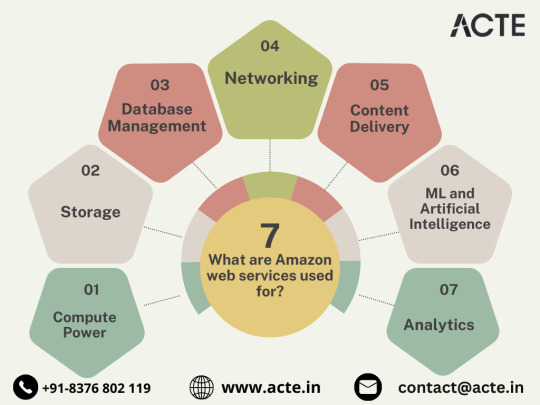
Global Content Delivery Excellence with Amazon CloudFront
Amazon CloudFront emerges as a dynamic content delivery network (CDN) service, securely delivering data, videos, applications, and APIs on a global scale. This ensures low latency and high transfer speeds, elevating user experiences across diverse geographical locations.
AI and ML Prowess Unleashed
AWS propels businesses into the future with advanced machine learning and artificial intelligence services. Amazon SageMaker, a fully managed service, enables developers to rapidly build, train, and deploy machine learning models. Additionally, Amazon Rekognition provides sophisticated image and video analysis, supporting applications in facial recognition, object detection, and content moderation.
Big Data Mastery: Amazon Redshift and Athena
For organizations grappling with massive datasets, AWS offers Amazon Redshift, a fully managed data warehouse service. It facilitates the execution of complex queries on large datasets, empowering informed decision-making. Simultaneously, Amazon Athena allows users to analyze data in Amazon S3 using standard SQL queries, unlocking invaluable insights.
In conclusion, Amazon Web Services (AWS) stands as an all-encompassing cloud computing platform, empowering businesses to innovate, scale, and optimize operations. From adaptable compute power and secure storage solutions to cutting-edge AI and ML capabilities, AWS serves as a robust foundation for organizations navigating the digital frontier. Embrace the limitless potential of cloud computing with AWS – where innovation knows no bounds.
3 notes
·
View notes
Text
Decoding Data Roles: A Comprehensive Guide to Data Analysts and Data Scientists
In today's data-driven landscape, the roles of data analysts and data scientists share some similarities but differ significantly in terms of their focus, skill sets, and the scope of their work. As organizations increasingly recognize the importance of these roles, the demand for skilled professionals has led to the emergence of various data science institutes. Let's explore the nuances that differentiate a data analyst from a data scientist, while also considering the importance of choosing the best Data Science institute for a comprehensive education in this field.

Let's delve into the nuances that differentiate a data analyst from a data scientist.
1. The Scope of Work:
Data analysts and data scientists play distinct roles when it comes to the scope of their work.
Data Analyst:
Data analysts are the interpreters of historical data. Their primary focus lies in uncovering trends, generating reports, and providing insights that aid day-to-day operations within an organization. They work with structured data, employing tools such as Excel, SQL, and visualization tools like Tableau or Power BI. The problems they address are typically well-defined and pertain to specific queries.
Data Scientist:
Data scientists, on the other hand, have a broader scope. While data analysis is a part of their work, they are also deeply involved in more complex tasks. This includes developing machine learning models, engaging in predictive modeling, and conducting advanced analytics. Data scientists deal with unstructured or semi-structured data, addressing more intricate and less defined problems. Their role extends beyond routine data interpretation to include exploratory data analysis, hypothesis testing, and the development of algorithms.
2. Skill Sets:
The skill sets required for data analysts and data scientists highlight the differences in their roles.
Data Analyst:
Data analysts need a strong foundation in statistical analysis, data cleaning, and proficiency in tools like Excel and SQL. While they may have some programming skills, they typically do not require the same level of expertise in machine learning. Visualization tools are a key part of their toolkit, enabling them to communicate insights effectively.
Data Scientist:
Data scientists require a more comprehensive skill set. They need a deep understanding of statistics, machine learning, and programming languages such as Python or R. Proficiency in data preprocessing, feature engineering, model selection, and evaluation is essential. Data scientists often work with big data technologies and possess advanced knowledge of analytical techniques, enabling them to create and implement complex algorithms.
3. Problem Complexity:
The complexity of problems tackled by data analysts and data scientists varies significantly.
Data Analyst:
Data analysts generally deal with well-defined problems and questions. Their focus is on providing answers to specific queries based on structured data. The insights they provide contribute to the day-to-day decision-making processes within an organization.
Data Scientist:
Data scientists thrive on addressing more complex and less structured problems. They engage in exploratory data analysis, hypothesis testing, and the creation of models capable of handling unstructured or semi-structured data. The solutions they develop often contribute to strategic decision-making, driving innovation, process optimization, and the creation of new products or services.
4. Business Impact:
The impact of data analysts and data scientists on an organization's decision-making processes is another area of distinction.
Data Analyst:
The insights provided by data analysts are integral to operational improvements and day-to-day decision-making. Their work contributes to the efficiency and effectiveness of ongoing processes within the organization.
Data Scientist:
Data scientists play a more strategic role in decision-making. Their insights have a broader impact on the organization, driving innovation, shaping long-term strategies, and contributing to the development of new products or services. The impact of a data scientist's work extends beyond routine operations, influencing the overall direction of the organization.
5. Educational Background:
The educational backgrounds of data analysts and data scientists reflect the differences in the complexity of their roles.
Data Analyst:
Data analysts may have a background in fields such as statistics, mathematics, economics, or business. While a bachelor's degree is often sufficient, some roles may require a master's degree.
Data Scientist:
Data scientists typically hold more advanced degrees, such as a master's or Ph.D., in fields like computer science, statistics, or data science. The nature of their work demands a deeper understanding of advanced mathematical and statistical concepts, as well as expertise in machine learning.
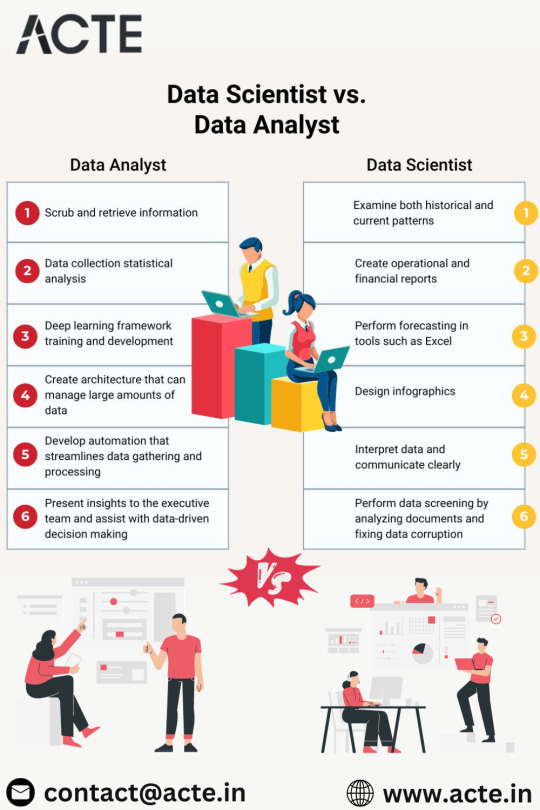
In conclusion, the divergence between data analysts and data scientists is profound, marked by distinctions in complexity, skill prerequisites, and organizational impact. Data analysts concentrate on offering actionable insights from existing data, enhancing day-to-day decision-making processes. In contrast, data scientists embark on tackling intricate issues, employing advanced analytics and machine learning to derive predictive and prescriptive insights that play a pivotal role in shaping an organization's strategic direction.As the demand for skilled professionals in these domains grows, the relevance of quality education becomes paramount. Choosing the best Data Science courses in Chennai is a crucial step in acquiring the necessary expertise for a successful career in the evolving landscape of data science.
3 notes
·
View notes
Text
How will Digital Marketing change in the Future?
The future of digital marketing is bright because now there is more market and consumer awareness. Businesses can also use a wide range of smart tools to collect an ocean of data and make in-depth analyses of their target audience. It's a completely new way to approach the audience.
The world is on the internet! From social media to Google searches, we all use the internet throughout the day. With this change of lifestyle, new platforms of marketing emerged. While traditional marketing still has its place in the world, digital marketing is quickly taking over thanks to affordability and analytics. A huge number of people are engaging via the internet, and digital marketing is growing and only going to increase further in the future.
According to the Digital Marketing Institute, “Digital Marketing is the use of digital channels to promote or market products and services to targeted consumers and businesses.”
Programmatic Advertising is taking place, providing dynamic modes of advertising to simplify digital ad campaigns. AI-enabled B2B customer experiences will increase with data and sales tech tools, enabling automated, algorithmic decisions. Buyers are looking for seamless experiences with instantaneous results.
The application of digital media marketing is making companies surge with demand and supplies of products to customers at a greater speed. Therefore, applying smart techniques with the help of various tools of digital marketing would benefit the companies to take advantage of the increasing demand in the customer segment and earn profit.
Digitization:
Everything is becoming digitized and fully automated in the days to come. If people are using things that are connected to the internet, then advertisement agencies and digital marketers should also come up with ways where there is the maximum possibility of traffic coming.
With everything becoming digital, the application of search engine optimization, social media marketing, and AdWords is going to help marketers to bag new opportunities and attract customers to purchase their products.
Network:
With more and more network towers coming up and new satellites being set up in the universe to make communication effective, the time is going to come when the network would be stronger than ever before. This is going to make things easy, quick, and transparent. Network availability and access are going to prove instrumental in making digital marketing the only way to reach customers.
Increased Demand:
The coming years are going to see customers getting more prosperous than ever before. With more purchasing power, people would want to purchase more products and services. This is going to facilitate things in the companies by making them available online to the customers and working with great speed to get the product delivered to them with no hassle. This is going to be another important tool that would lure customers and the fight would be about this aspect within the competitors.
What are the In-Demand Digital Marketing Skills?
Digital marketing requires a unique combination of both creativity and technical knowledge. And so, digital marketers have to master a wide range of skills and tools in order to stay on top of the ever-growing digital media channels they used to create, deploy, manage, and track campaigns. In such a vast field, you will meet a variety of sections, each of which requires a unique skill set.
Below is a list of prominent skills for a digital marketing career.
Data Analytics:
You must know how to use and understand Google Analytics or the alternatives, such as Google Tag Manager and SQL. Monitoring and reporting can be tricky, but it helps to understand your customer's behavior. With this knowledge, you can apply it to new solutions that boost traffic and conversions.
SEO (Search Engine Optimization):
Search Engine Optimization or SEO is structuring your content to show up on search engine websites (Google, Bing, Yahoo). Marketers will try to ‘rank’ a certain word or phrase relevant to their business so their potential customers will find them. This is called organic traffic. It’s essential to know SEO if you want to become a successful digital marketer.
Content Marketing:
Content marketing refers to the creation and promotion of valuable content for the audience. It helps in establishing trust in the audience and attracting new visitors. All the content you see online, whether it’s a blog article or a YouTube video, results from content marketing. Brands can help their prospects by solving their real-life problems through high-quality content.
Long story short, these are some of the latest digital trends that you must know if you are unaware of these trends or you may not compete with your competitors. Therefore, I suggest you consider this article and update your skills accordingly.
2 notes
·
View notes
Text
Why Power BI Takes the Lead Against SSRS
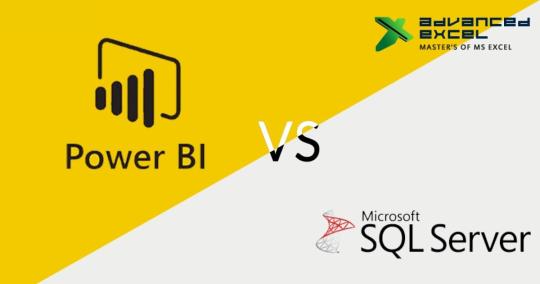
In an era where data steers the course of businesses and fuels informed decisions, the choice of a data visualization and reporting tool becomes paramount. Amidst the myriad of options, two stalwarts stand out: Power BI and SSRS (SQL Server Reporting Services). As organizations, including those seeking Power BI training in Gurgaon, strive to extract meaningful insights from their data, the debate about which tool to embrace gains prominence. In this digital age, where data is often referred to as the "new oil," selecting the right tool can make or break a business's competitive edge.
Understanding the Landscape
What is Power BI?
Microsoft Power BI is a powerful business analytics application that enables organizations to visualize data and communicate insights across the organization. With its intuitive interface and user-friendly features, Power BI transforms raw data into interactive visuals, making it easier to interpret and draw actionable conclusions.
What is SSRS?
On the other hand, SSRS, also developed by Microsoft, focuses on traditional reporting. It enables the creation, management, and delivery of traditional paginated reports. SSRS has been a reliable choice for years, but the advent of Power BI has brought new dimensions to data analysis.
The Advantages of Power BI Over SSRS
In the realm of data analysis and reporting tools, Power BI shines as a modern marvel, surpassing SSRS in various crucial aspects. Let's explore the advantages that set Power BI apart:
1. Interactive Visualizations
Power BI's forte lies in its ability to transform raw data into interactive and captivating visual representations. Unlike SSRS, which predominantly deals with static reports, Power BI empowers users to explore data dynamically, enabling them to drill down into specifics and gain deeper insights. This interactive approach enhances data comprehension and decision-making processes.
2. Real-time Insights
While SSRS offers a snapshot of data at a particular moment, Power BI steps ahead with real-time data analysis capabilities. Modern businesses, including those enrolling in a Power BI training institute in Bangalore, require up-to-the-minute insights to stay competitive, and Power BI caters precisely to this need. It connects seamlessly to various data sources, ensuring that decisions are based on the latest information.
3. User-Friendly Interface
Power BI's intuitive interface stands in stark contrast to SSRS's somewhat technical setup. With its drag-and-drop functionality, Power BI eliminates the need for extensive coding knowledge. This accessibility allows a wider range of users, from business analysts to executives, to create and customize reports without depending heavily on IT departments.
4. Scalability
As a company grows, so does the amount of data it handles. Power BI's cloud-based architecture ensures scalability without compromising performance. Whether you're dealing with a small dataset or handling enterprise-level data, Power BI can handle the load, guaranteeing smooth operations and robust analysis.
5. Natural Language Queries
One of Power BI's standout features is its ability to understand natural language queries. Users can interact with the tool using everyday language and receive relevant visualizations in response. This bridge between human language and data analytics simplifies the process for non-technical users, making insights accessible to all.
The SEO Advantage
In the digital age, search engine optimization (SEO) plays a vital role in ensuring your content, including information about Power BI training in Mumbai, reaches the right audience. When it comes to comparing Power BI and SSRS in terms of SEO, Power BI once again takes the lead.
With their interactive visual content, Power BI-enhanced articles attract more engagement. This higher engagement leads to longer on-page time, lower bounce rates, and improved SEO rankings. Search engines recognize user behavior as a marker of content quality and relevance, boosting the visibility of Power BI-related articles.
For more information, contact us at:
Call: 8750676576, 871076576
Email: [email protected]
Website: www.advancedexcel.net
#power bi training in gurgaon#power bi coaching in gurgaon#power bi classes in mumbai#power bi course in mumbai#power bi training institute in bangalore#power bi coaching in bangalore
2 notes
·
View notes
Text
Azure Data Engineering Tools For Data Engineers

Azure is a cloud computing platform provided by Microsoft, which presents an extensive array of data engineering tools. These tools serve to assist data engineers in constructing and upholding data systems that possess the qualities of scalability, reliability, and security. Moreover, Azure data engineering tools facilitate the creation and management of data systems that cater to the unique requirements of an organization.
In this article, we will explore nine key Azure data engineering tools that should be in every data engineer’s toolkit. Whether you’re a beginner in data engineering or aiming to enhance your skills, these Azure tools are crucial for your career development.
Microsoft Azure Databricks
Azure Databricks is a managed version of Databricks, a popular data analytics and machine learning platform. It offers one-click installation, faster workflows, and collaborative workspaces for data scientists and engineers. Azure Databricks seamlessly integrates with Azure’s computation and storage resources, making it an excellent choice for collaborative data projects.
Microsoft Azure Data Factory
Microsoft Azure Data Factory (ADF) is a fully-managed, serverless data integration tool designed to handle data at scale. It enables data engineers to acquire, analyze, and process large volumes of data efficiently. ADF supports various use cases, including data engineering, operational data integration, analytics, and data warehousing.
Microsoft Azure Stream Analytics
Azure Stream Analytics is a real-time, complex event-processing engine designed to analyze and process large volumes of fast-streaming data from various sources. It is a critical tool for data engineers dealing with real-time data analysis and processing.
Microsoft Azure Data Lake Storage
Azure Data Lake Storage provides a scalable and secure data lake solution for data scientists, developers, and analysts. It allows organizations to store data of any type and size while supporting low-latency workloads. Data engineers can take advantage of this infrastructure to build and maintain data pipelines. Azure Data Lake Storage also offers enterprise-grade security features for data collaboration.
Microsoft Azure Synapse Analytics
Azure Synapse Analytics is an integrated platform solution that combines data warehousing, data connectors, ETL pipelines, analytics tools, big data scalability, and visualization capabilities. Data engineers can efficiently process data for warehousing and analytics using Synapse Pipelines’ ETL and data integration capabilities.
Microsoft Azure Cosmos DB
Azure Cosmos DB is a fully managed and server-less distributed database service that supports multiple data models, including PostgreSQL, MongoDB, and Apache Cassandra. It offers automatic and immediate scalability, single-digit millisecond reads and writes, and high availability for NoSQL data. Azure Cosmos DB is a versatile tool for data engineers looking to develop high-performance applications.
Microsoft Azure SQL Database
Azure SQL Database is a fully managed and continually updated relational database service in the cloud. It offers native support for services like Azure Functions and Azure App Service, simplifying application development. Data engineers can use Azure SQL Database to handle real-time data ingestion tasks efficiently.
Microsoft Azure MariaDB
Azure Database for MariaDB provides seamless integration with Azure Web Apps and supports popular open-source frameworks and languages like WordPress and Drupal. It offers built-in monitoring, security, automatic backups, and patching at no additional cost.
Microsoft Azure PostgreSQL Database
Azure PostgreSQL Database is a fully managed open-source database service designed to emphasize application innovation rather than database management. It supports various open-source frameworks and languages and offers superior security, performance optimization through AI, and high uptime guarantees.
Whether you’re a novice data engineer or an experienced professional, mastering these Azure data engineering tools is essential for advancing your career in the data-driven world. As technology evolves and data continues to grow, data engineers with expertise in Azure tools are in high demand. Start your journey to becoming a proficient data engineer with these powerful Azure tools and resources.
Unlock the full potential of your data engineering career with Datavalley. As you start your journey to becoming a skilled data engineer, it’s essential to equip yourself with the right tools and knowledge. The Azure data engineering tools we’ve explored in this article are your gateway to effectively managing and using data for impactful insights and decision-making.
To take your data engineering skills to the next level and gain practical, hands-on experience with these tools, we invite you to join the courses at Datavalley. Our comprehensive data engineering courses are designed to provide you with the expertise you need to excel in the dynamic field of data engineering. Whether you’re just starting or looking to advance your career, Datavalley’s courses offer a structured learning path and real-world projects that will set you on the path to success.
Course format:
Subject: Data Engineering Classes: 200 hours of live classes Lectures: 199 lectures Projects: Collaborative projects and mini projects for each module Level: All levels Scholarship: Up to 70% scholarship on this course Interactive activities: labs, quizzes, scenario walk-throughs Placement Assistance: Resume preparation, soft skills training, interview preparation
Subject: DevOps Classes: 180+ hours of live classes Lectures: 300 lectures Projects: Collaborative projects and mini projects for each module Level: All levels Scholarship: Up to 67% scholarship on this course Interactive activities: labs, quizzes, scenario walk-throughs Placement Assistance: Resume preparation, soft skills training, interview preparation
For more details on the Data Engineering courses, visit Datavalley’s official website.
#datavalley#dataexperts#data engineering#data analytics#dataexcellence#data science#power bi#business intelligence#data analytics course#data science course#data engineering course#data engineering training
3 notes
·
View notes
Text
Azure’s Evolution: What Every IT Pro Should Know About Microsoft’s Cloud
IT professionals need to keep ahead of the curve in the ever changing world of technology today. The cloud has become an integral part of modern IT infrastructure, and one of the leading players in this domain is Microsoft Azure. Azure’s evolution over the years has been nothing short of remarkable, making it essential for IT pros to understand its journey and keep pace with its innovations. In this blog, we’ll take you on a journey through Azure’s transformation, exploring its history, service portfolio, global reach, security measures, and much more. By the end of this article, you’ll have a comprehensive understanding of what every IT pro should know about Microsoft’s cloud platform.
Historical Overview
Azure’s Humble Beginnings
Microsoft Azure was officially launched in February 2010 as “Windows Azure.” It began as a platform-as-a-service (PaaS) offering primarily focused on providing Windows-based cloud services.
The Azure Branding Shift
In 2014, Microsoft rebranded Windows Azure to Microsoft Azure to reflect its broader support for various operating systems, programming languages, and frameworks. This rebranding marked a significant shift in Azure’s identity and capabilities.
Key Milestones
Over the years, Azure has achieved numerous milestones, including the introduction of Azure Virtual Machines, Azure App Service, and the Azure Marketplace. These milestones have expanded its capabilities and made it a go-to choice for businesses of all sizes.
Expanding Service Portfolio
Azure’s service portfolio has grown exponentially since its inception. Today, it offers a vast array of services catering to diverse needs:
Compute Services: Azure provides a range of options, from virtual machines (VMs) to serverless computing with Azure Functions.
Data Services: Azure offers data storage solutions like Azure SQL Database, Cosmos DB, and Azure Data Lake Storage.
AI and Machine Learning: With Azure Machine Learning and Cognitive Services, IT pros can harness the power of AI for their applications.
IoT Solutions: Azure IoT Hub and IoT Central simplify the development and management of IoT solutions.
Azure Regions and Global Reach
Azure boasts an extensive network of data centers spread across the globe. This global presence offers several advantages:
Scalability: IT pros can easily scale their applications by deploying resources in multiple regions.
Redundancy: Azure’s global datacenter presence ensures high availability and data redundancy.
Data Sovereignty: Choosing the right Azure region is crucial for data compliance and sovereignty.
Integration and Hybrid Solutions
Azure’s integration capabilities are a boon for businesses with hybrid cloud needs. Azure Arc, for instance, allows you to manage on-premises, multi-cloud, and edge environments through a unified interface. Azure’s compatibility with other cloud providers simplifies multi-cloud management.
Security and Compliance
Azure has made significant strides in security and compliance. It offers features like Azure Security Center, Azure Active Directory, and extensive compliance certifications. IT pros can leverage these tools to meet stringent security and regulatory requirements.
Azure Marketplace and Third-Party Offerings
Azure Marketplace is a treasure trove of third-party solutions that complement Azure services. IT pros can explore a wide range of offerings, from monitoring tools to cybersecurity solutions, to enhance their Azure deployments.
Azure DevOps and Automation
Automation is key to efficiently managing Azure resources. Azure DevOps services and tools facilitate continuous integration and continuous delivery (CI/CD), ensuring faster and more reliable application deployments.
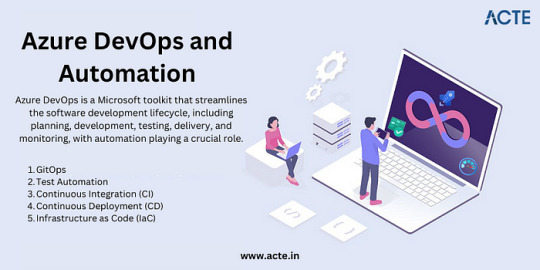
Monitoring and Management
Azure offers robust monitoring and management tools to help IT pros optimize resource usage, troubleshoot issues, and gain insights into their Azure deployments. Best practices for resource management can help reduce costs and improve performance.
Future Trends and Innovations
As the technology landscape continues to evolve, Azure remains at the forefront of innovation. Keep an eye on trends like edge computing and quantum computing, as Azure is likely to play a significant role in these domains.
Training and Certification
To excel in your IT career, consider pursuing Azure certifications. ACTE Institute offers a range of certifications, such as the Microsoft Azure course to validate your expertise in Azure technologies.

In conclusion, Azure’s evolution is a testament to Microsoft’s commitment to cloud innovation. As an IT professional, understanding Azure’s history, service offerings, global reach, security measures, and future trends is paramount. Azure’s versatility and comprehensive toolset make it a top choice for organizations worldwide. By staying informed and adapting to Azure’s evolving landscape, IT pros can remain at the forefront of cloud technology, delivering value to their organizations and clients in an ever-changing digital world. Embrace Azure’s evolution, and empower yourself for a successful future in the cloud.
#microsoft azure#tech#education#cloud services#azure devops#information technology#automation#innovation
2 notes
·
View notes
Text
Demystifying Microsoft Azure Cloud Hosting and PaaS Services: A Comprehensive Guide
In the rapidly evolving landscape of cloud computing, Microsoft Azure has emerged as a powerful player, offering a wide range of services to help businesses build, deploy, and manage applications and infrastructure. One of the standout features of Azure is its Cloud Hosting and Platform-as-a-Service (PaaS) offerings, which enable organizations to harness the benefits of the cloud while minimizing the complexities of infrastructure management. In this comprehensive guide, we'll dive deep into Microsoft Azure Cloud Hosting and PaaS Services, demystifying their features, benefits, and use cases.
Understanding Microsoft Azure Cloud Hosting
Cloud hosting, as the name suggests, involves hosting applications and services on virtual servers that are accessed over the internet. Microsoft Azure provides a robust cloud hosting environment, allowing businesses to scale up or down as needed, pay for only the resources they consume, and reduce the burden of maintaining physical hardware. Here are some key components of Azure Cloud Hosting:
Virtual Machines (VMs): Azure offers a variety of pre-configured virtual machine sizes that cater to different workloads. These VMs can run Windows or Linux operating systems and can be easily scaled to meet changing demands.
Azure App Service: This PaaS offering allows developers to build, deploy, and manage web applications without dealing with the underlying infrastructure. It supports various programming languages and frameworks, making it suitable for a wide range of applications.
Azure Kubernetes Service (AKS): For containerized applications, AKS provides a managed Kubernetes service. Kubernetes simplifies the deployment and management of containerized applications, and AKS further streamlines this process.
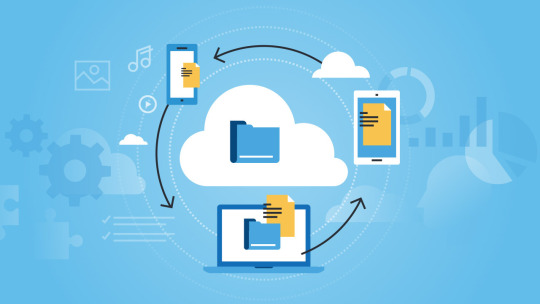
Exploring Azure Platform-as-a-Service (PaaS) Services
Platform-as-a-Service (PaaS) takes cloud hosting a step further by abstracting away even more of the infrastructure management, allowing developers to focus primarily on building and deploying applications. Azure offers an array of PaaS services that cater to different needs:
Azure SQL Database: This fully managed relational database service eliminates the need for database administration tasks such as patching and backups. It offers high availability, security, and scalability for your data.
Azure Cosmos DB: For globally distributed, highly responsive applications, Azure Cosmos DB is a NoSQL database service that guarantees low-latency access and automatic scaling.
Azure Functions: A serverless compute service, Azure Functions allows you to run code in response to events without provisioning or managing servers. It's ideal for event-driven architectures.
Azure Logic Apps: This service enables you to automate workflows and integrate various applications and services without writing extensive code. It's great for orchestrating complex business processes.
Benefits of Azure Cloud Hosting and PaaS Services
Scalability: Azure's elasticity allows you to scale resources up or down based on demand. This ensures optimal performance and cost efficiency.
Cost Management: With pay-as-you-go pricing, you only pay for the resources you use. Azure also provides cost management tools to monitor and optimize spending.
High Availability: Azure's data centers are distributed globally, providing redundancy and ensuring high availability for your applications.
Security and Compliance: Azure offers robust security features and compliance certifications, helping you meet industry standards and regulations.
Developer Productivity: PaaS services like Azure App Service and Azure Functions streamline development by handling infrastructure tasks, allowing developers to focus on writing code.
Use Cases for Azure Cloud Hosting and PaaS
Web Applications: Azure App Service is ideal for hosting web applications, enabling easy deployment and scaling without managing the underlying servers.
Microservices: Azure Kubernetes Service supports the deployment and orchestration of microservices, making it suitable for complex applications with multiple components.
Data-Driven Applications: Azure's PaaS offerings like Azure SQL Database and Azure Cosmos DB are well-suited for applications that rely heavily on data storage and processing.
Serverless Architecture: Azure Functions and Logic Apps are perfect for building serverless applications that respond to events in real-time.
In conclusion, Microsoft Azure's Cloud Hosting and PaaS Services provide businesses with the tools they need to harness the power of the cloud while minimizing the complexities of infrastructure management. With scalability, cost-efficiency, and a wide array of services, Azure empowers developers and organizations to innovate and deliver impactful applications. Whether you're hosting a web application, managing data, or adopting a serverless approach, Azure has the tools to support your journey into the cloud.
#Microsoft Azure#Internet of Things#Azure AI#Azure Analytics#Azure IoT Services#Azure Applications#Microsoft Azure PaaS
2 notes
·
View notes